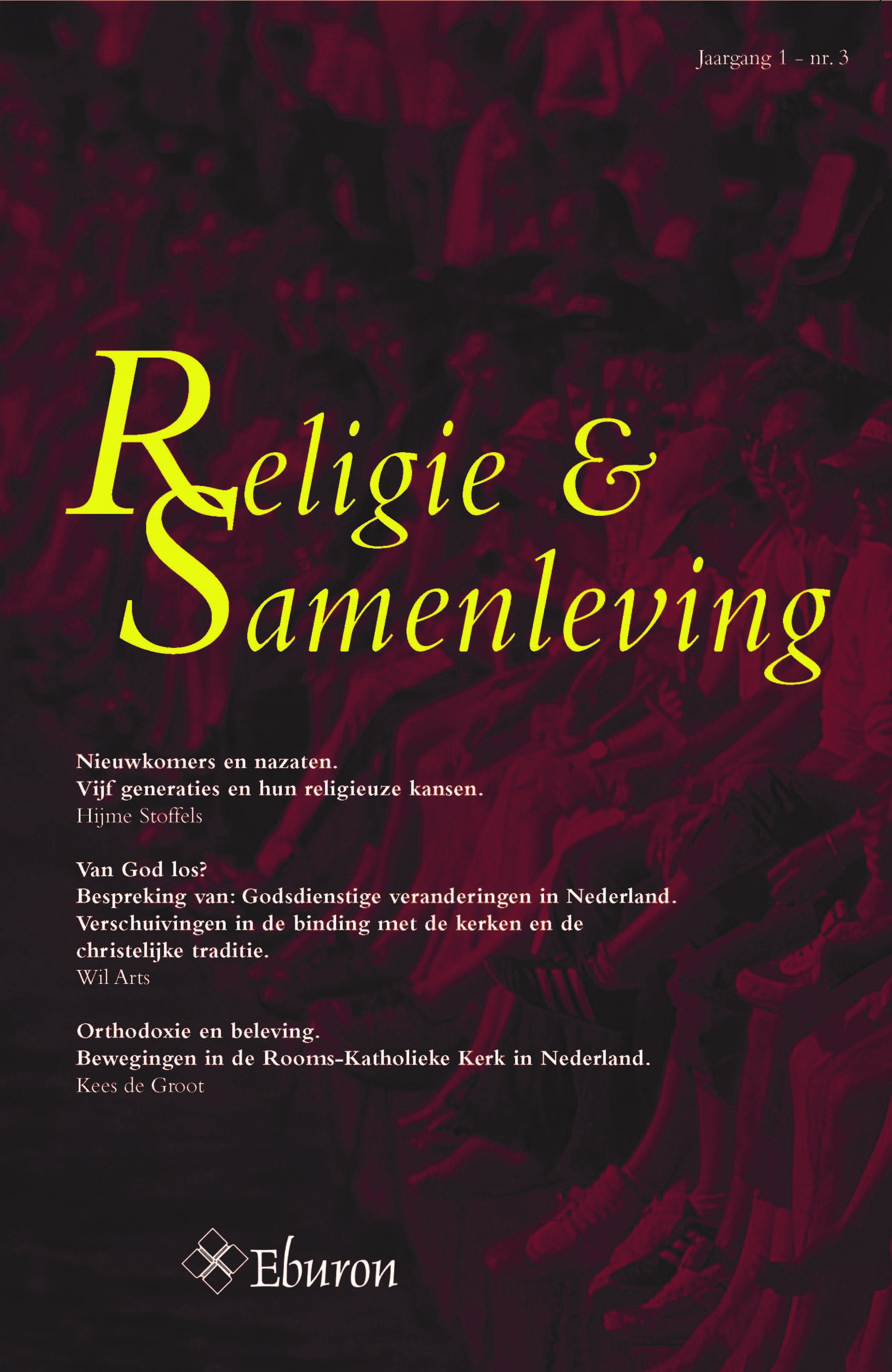Orthodoxie en beleving
Bewegingen in de Rooms-Katholieke Kerk in Nederland
DOI:
https://doi.org/10.54195/RS.13227Samenvatting
This article explores the impact of the so-called ‘new movements’, such as Focolare and the Emmanuel Community, within the Roman Catholic Church. The author claims that these are not just restaurative movements for religious virtuosi, but also representatives of religion in late (or liquid) modernity. On one hand, these movements cherish traditional beliefs and values, ecclesiastical authority, and social solidarity. On the other, they are characterized by a positive evaluation of personal choice, interest in the self, international social networks, and the use of modern means of communication. Although probably only 10,000 people are active in these movements (including older movements), their impact is problably fairly large, because of its attractiveness for younger people, especially the younger generation of priests. This impact is focused on the personal level: on devotion and the proclamation of the Catholic faith. The spirituality of the ‘new movements’, however, tends to spread in the wider church, predominantly along individual lines.
According to the author, the Roman Catholic Church, which functions as a service church for a large proportion of the Dutch population, will transform because of this tendency. This interesting development is illustrated by an analysis of the World Youth Days, where orthodoxy and experience-styled religion meet each other in an ambivalent marriage between the traditional church and late modern event culture.




